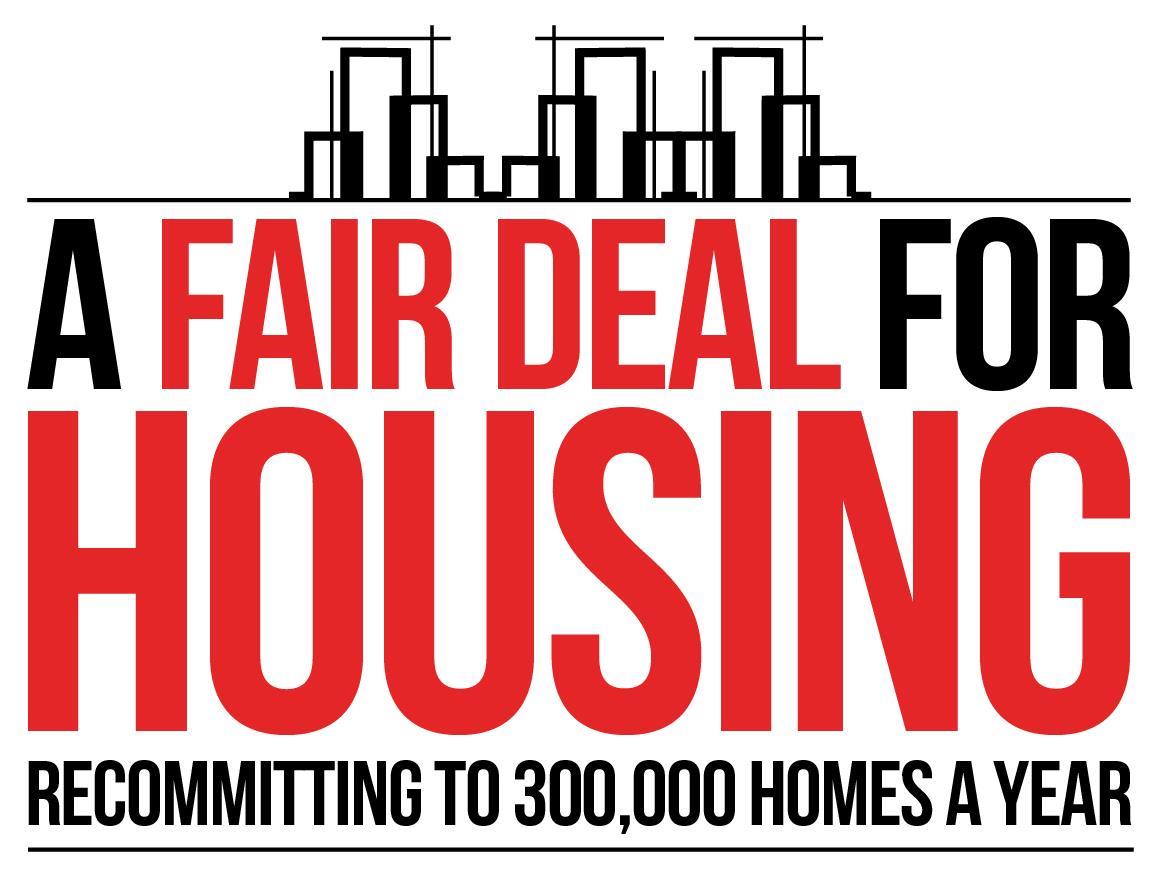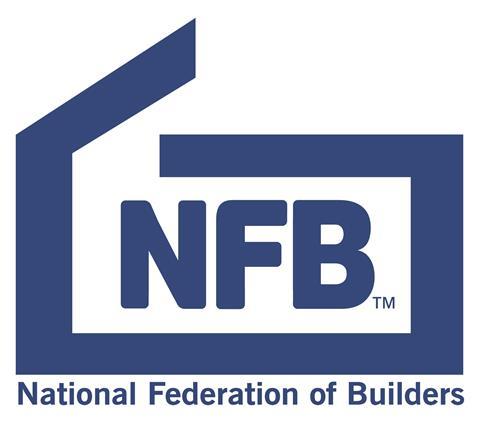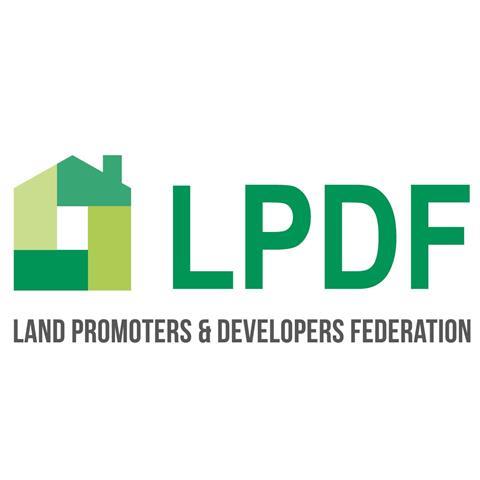Trusted media brand of the Chartered Institute of Housing

Trusted media brand of the Chartered Institute of Housing

Why do we want a 'fair deal for housing'?
This country needs more housing. According to research commissioned by the National Housing Federation and Crisis in 2018, 340,000 homes need to be built annually until 2031 to fill a four-million-home shortage in England.
We are currently nowhere near these levels, with 216,000 net additions to the housing stock in 2020-21 and 243,000 in 2019-20 pre-pandemic. This lack of supply is a major factor in pushing up house prices, creating problems of affordability for both buyers and renters.
Ministers, however, appear to be turning their back on housing delivery at the worst possible time, retreating from the government’s 300,000 homes-a-year manifesto pledge and watering down radical planning reforms that were intended to get Britain building.
Over-stretched planning departments, confusion around reforms and extra regulation around nutrient neutrality are all holding up development in many parts of the country. When you factor in extra regulatory costs, building safety levies, inflation and a slowdown in house price growth, building homes is set to become a much more difficult process – unless the government and industry can perform a handbrake turn. Indeed, official statistics suggest that development is already slowing.
Many large housing associations – which deliver one in four new homes in England – are also having to make tough decisions about whether to cut development. This is because they are they rightly investing more in improving existing stock to decarbonise, improve home standards and meet building safety goals, all in an uncertain funding environment. They should not be facing “either/or” decisions – we need existing homes to be safer, greener and built to a higher standard - but we also need more of them.
Housing Today believes that the government should re-commit to delivering 300,000 homes a year and we are confident that, with the right package of support, the housing development sector will push itself to find ways to build these homes.
Industry organisation supporters
>View more supporters
What are we trying to find out?
Over the next few months, Housing Today will be exploring potential solutions to boost housebuilding.
We want to hear from you: what do you think can make a difference at a policy level? What can the industry do better?
Click here to read ideas from the sector so far
We believe that, with the right commitments from ministers and the industry, it is possible to build more homes and help the government to meet its objectives to “build beautiful”, improve quality and safety, boost home ownership and level up the UK.
To kick off the debate, we have identified eight potential solutions to the current housing development challenges. This campaign aims to start a constructive conversation with industry so that we can come up with the best way forward to deliver a fair deal for housing.
Potential solutions
The government has made a welcome proposal to increase planning application fees in order to boost council planning departments. But we suspect the funding will not be enough to make up for a decade of under-investment. And is there a guarantee, without ring-fencing, that even the extra money likely to be raised will go where it needs to?
There are also concerns that the proposed planning reform programme, far from being pro-new homes as originally envisaged, will give so much weight to anti-development voices as to actually make it harder to build. We will look at how the government can reconsider this balance of measures.
As housing secretary Michael Gove has pointed out, we have never built 300,000 homes a year without the social housing sector stepping up and delivering at scale.
However, the largest housing associations are now diverting investment into existing stock to make safety and energy performance improvements.
Is it time to increase social housing grants, both in volume and in grant rate per home? This would reduce the reliance on leveraging housing association balance sheets.
Should the government also explore measures such as VAT reductions on decarbonisation work and extending the use of loan guarantees – under which the government underwrites housing association debt to make it cheaper – to help lower borrowing costs, meaning more money can go on delivery? Providing certainty about social housing rent-setting rules after 2025 would also be welcome.
In 1988 SME builders constructed 39% of homes in England and Wales. By 2020 this had plummeted to 10%. Many argue that more needs to be done to get smaller housebuilders building again.
One of the biggest issues cited by housebuilders is access to land, with the planning system often a barrier. Should we look at ways of speeding up the process of planning for smaller sites, perhaps through including in-fill sites in local plans?
Environmental rules governing pollution levels in watercourses in protected habitats are holding up the development of an estimated 100,000 homes, but the government has done little to tackle the source of the problem: farming practices and water treatment infrastructure.
Water and farming regulators could be tasked with ensuring that developer contributions can be used to upgrade water treatment works, where that would significantly aid pollution levels, and incentivise modern farming practices. Natural England could ensure that councils are given fair warning where pollution is suspected, to avoid lengthy planning hiatuses in future.
The Section 106 system of planning contribution – under which developers agree to a proportion of homes in a development being affordable as a condition of planning approval – is a key route for investment into housing delivery. Around half of housing association development is funded through this route and it is becoming an important mechanism for institutional investment also.
In the Levelling Up and Regeneration Bill, the government is proposing to replace this mechanism with an infrastructure levy. The new system should also deliver as much – and ideally more – affordable homes both on and off site as the present system, as well as supporting infrastructure for new communities and towns.
The UK housebuilding industry has agreed to pay £2bn through the “developer pledge” to remediate its own blocks. It is also paying the £2.5-£3bn residential property tax and the £3bn Building Safety Levy. In many cases individual companies will be paying to fix problems that were not of their making. This estimated total cost of £8bn will hit housing supply.
Everyone agrees that leaseholders should not pay for the failures of the industry and past regulation. But, in the name of fairness and making sure UK housebuilders do not become uncompetitive against overseas firms, the government must urgently find ways of ensuring that other parts of the industry, such as product manufacturers, also contribute.
Affordable housing delivery has become more reliant on housing associations raising debt against their stock. They can only do this efficiently if they are confident their asset base will remain stable.
How can we best ensure the proposed Right to Buy for housing association tenants is sufficiently funded to ensure that the full cost of the discount and building an adequate replacement home are met?








